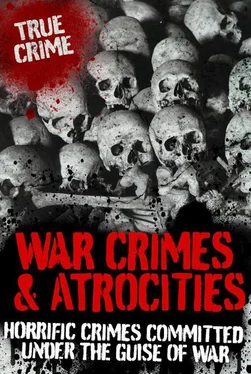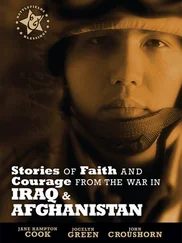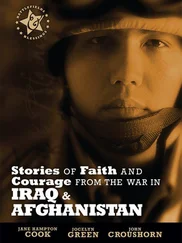When it became certain that Japan would have to surrender, they made every effort to cover up for their atrocities by destroying incriminating evidence. For many years the rough track through the jungle was overgrown but in recent years it has been uncovered.
MASSACRE ON BANKA ISLAND
In February 1942, the fall of Singapore to the Japanese army seemed imminent. The British ship SS Vyner Brooke was carrying some of the last citizens to escape Singapore, including 65 Australian army nurses who had been evacuated from the besieged city. Also on board were over 200 civilians and English military personnel, who were also evacuees. The Vyner Brooke was only licenced to carry 300 passengers, so conditions were cramped and there was not enough food on board for regular meals. There were no bunks on board, so the nurses had made makeshift beds on the deck. As the ship sailed through the treacherous trait between Sumatra and Bangka, it sighted Japanese bombers. The ship sounded its warning siren, and the passengers crowded below deck. The first missile missed its target, which gave the Vyner Brooke time to change its course and fire its one token cannon in resistance. However, the Japanese planes returned and this time made three direct hits. The overloaded ship sank quickly.
The trained nurses automatically ran to any part of the sinking wreckage to administer morphine and dressings to the wounded. When they could do no more to help, the nurses jumped overboard and swam to a partly submerged lifeboat. In total 12 nurses (three of them wounded), two civilian women, one man and a ship’s officer either clung to the side or managed to climb into the lifeboat. Although they could see land in the distance, it took them eight hours to reach the shores of Banka Island. Seeing fire in the distance, the survivors walked along the shoreline and found other survivors from the Vyner Brooke , who had managed to make their way using pieces of the ship as rafts. Others joined them in the night, many of whom had literally been washed in on the drifting tide.
The following morning the groups divided into three and went in search of food, clothing or anyone who could assist them in any way. One of the parties found a village, but when they asked for help they were told that the Japanese troops had already taken control of the island, and that they feared retribution if they were to offer them any assistance. The other two groups came back and reported similar stories.
That night another group of survivors – 20 English soldiers – from another ship that had been sunk, joined the crowd from the Vyner Brooke , bringing the total up to 100. One of the officers explained to the new party that there was no food or shelter, and he advised that they gave themselves up to the Japanese.
A party of men went off to find the Japanese, while 22 nurses stayed behind to look after the injured. Another party of women were told to walk to Muntok to ask for help. They made sure that they were easily recognizable as non-combatants by erecting a red cross. By mid-morning, the ship’s officer returned with about 20 Japanese soldiers. They proceeded to separate the men from the women. The Japanese then divided the men into two groups and marched off down the beach out of sight. The nurses heard gunfire coming from that direction and shortly afterwards the Japanese soldiers returned on their own. They proceeded to sit down in front of the women and cleaned their rifles, wiping blood off the bayonets.
The nurses were then told to form a line and walk into the sea. They all knew exactly what was going to happen, and putting on a brave face, their matron said, ‘Chin up girls. I’m proud of you and I love you all.’ As the water reached their waists the soldiers opened fire. One of the nurses, sister Bullwinkle, was hit in the back by a bullet, which knocked her off her feet into the surf. Realizing that she had only been wounded, she lay still pretending to be dead. The waves brought her back to the edge of the shore, where she lay for about ten minutes before daring to open her eyes and look around. Seeing that the Japanese soldiers had gone, she got up and went into the jungle, where she lay semi-unconscious for about two days.
By the third day she had recovered enough to be able to walk to a fresh water spring close to the beach. She bathed her wounds, which had been sterilized by the salt water, and was then startled by the sound of an English voice coming from the trees. A soldier, who had been left on the beach laying on a stretcher with the other wounded, had managed to also survive the Japanese attack. Although he had received a bayonet wound to his chest, it had missed his vital organs and he had been able to crawl into the jungle. The remainder of the wounded still lay on their stretchers on the sand where they had been slaughtered.
The nurse dressed the soldier’s wounds as best she could and then helped him to hide in the edge of the jungle. Over a period of a few days, the nurse managed to beg food from the fearful Indonesian women in the nearby villages, and eventually the two survivors had enough strength to attempt the walk to Muntok. They didn’t get far before they were picked up by a Japanese officer in a truck and driven to the army’s headquarters. They were questioned for several hours and then made to line up with the already crowded coolie lines of prisoners and refugees. Unfortunately, the English soldier who had arrived with the nurse died a couple of days later from his wounds.
Aware that if she told the Japanese what she had witnessed she would be killed, sister Bullwinkle kept her story secret for the three years that she spent in the prisoner-of-war camp, unable to tell anyone of the atrocities that had taken place following her shipwreck.
EVIDENCE OF CANNIBALISM
Horrifying evidence came to light after the war that the Japanese soldiers had committed acts of cannibalism on Australian prisoners of war. What is even more horrifying is that this was not as a direct result of shortage of normal food, but just a sick desire to eat human flesh.
Between 21 and 26 August, 1942, 13,500 Japanese troops landed at the villages of Gona and Buna on the northern coast of Australia’s territory of Papua. Their mission was to cross the precipitous terrain of the Owen Stanley Range and capture the Australian stronghold of Port Moresby on the southern coast. The Japanese army were tough, jungle-trained veterans, but they were unprepared for the narrow dirt track called the Kokoda Track. The track crossed some of the most rugged and isolated terrain in the world and was only passable on foot. Hot humid days with intensely cold nights, torrential rainfall and endemic tropical diseases, such as malaria, made it a challenge for even the toughest soldier and the Japanese troops set off with just ten days of rations.
There were 500 Australian militia defending the Kokoda Track, and these poorly armed and supplied men were outnumbered by the Japanese by ten to one. Many of the Australian soldiers were only 18 and lacked adequate training or experience but they fought hard to defend their post. They forced the Japanese army to fight every step of the way and they succeeded in blocking their advance for over five weeks.
The exhausted and starving Australian militia were eventually relieved by another battalion on 26 August. These new militia were more experienced and used to combat, but they were still outnumbered by the Japanese five to one. Bloody fighting broke out on the Owen Stanley Range and both sides suffered heavy casualties. The Japanese, who were now low on supplies and totally exhausted, came to a halt on the top of the ridge. Unable to get any backup, they were forced to retreat to the beaches on the northern coast, closely followed by the Australian reinforcements.
Читать дальше












